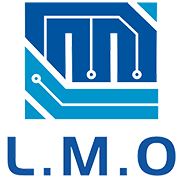With the iteration of technological updates and the rapid development of electronic digital, fast charging has become a major battlefield for major mobile phone manufacturers to compete.
1.Let's first divide the charging protocols into categories
The high-voltage and low-current charging method needs to be transformed at the mobile phone end to reduce the voltage to a range suitable for the digestion of mobile phone batteries. The energy loss during the period will be dissipated in the form of heat energy, which also leads to the problem of mobile phone charging and heating
The main disadvantages of low-voltage, high-current solutions are higher customization costs and low applicability. The internal components of the mobile phone, the charging head and the charging cable need to be customized according to the needs. Taking the wire as an example, the common general-purpose charging wire can only carry a current of 3A. To achieve 5A high-current fast charging, the charging wire must be modified. We saw that OPPO and Vivo, which invested a lot in fast charging in the past, have larger charging heads and thicker charging cables, which is based on this reason.
The fast charging of dynamic adjustment is basically based on the series connection of multiple cells (charge pumps) and handing over the voltage conversion operation to the charging head, but the charging head instead of the mobile phone does the detailed voltage changes to achieve.
2.After briefly explaining the principle, let's take a look at the major public fast charging protocols
USB PD is one of the most versatile public protocols at present. We are most familiar with its application on Apple, but the PD 3.0 protocol adds a specification called PPS specification (Programmable Power Supply), that is, Google requires Android7.0 The fast charging protocol of the above mobile phones must support the PD protocol. But it should be noted that the premise of supporting PPS is supporting PD 3.0, but supporting PD 3.0 does not mean supporting PPS.
The PD3.0 protocol already includes Qualcomm QC 3.0 and 4.0, Huawei's SCP and FCP, MTK's PE3.0 and PE2.0, and OPPO's VOOC and other protocols. PD 3.0 supports up to 100W charging power, and the power is backward compatible. Thanks to its compatibility with multiple protocols, for example, if we have Apple mobile phones, Android mobile phones, notebooks, and game consoles, we can use a PD3.0 The charging head of the agreement is done.
QC is Qualcomm's own protocol, QC2.0 supports up to 18W, QC3.0 supports up to 22W, QC4.0 and QC4.0+ can support up to 27W, the difference is that QC4.0+ down Compatible with QC2.0 and QC3.0, the latest QC5.0 supports 100W+ power, is backward compatible with the previous generation QC protocol, and both PD and PPS protocol power supplies can quickly charge devices that support the QC5 protocol
3 Then let's take a look at the private fast charging protocol of mainstream mobile phones
Huawei: FCP & SCP
In 2015, Huawei Mate8 was released with a charger that supports 18W fast charging, officially called QuickCharge technology, and the protocol is FCP (Fast Charge Protocol). FCP adopts the same high voltage and low current scheme as QC2.0 in the same period, but Huawei equipment cannot be compatible with QC2.0.
In 2016, Huawei Mate9 was released, and SuperCharge super fast charging technology was announced at the same time, which supports 22.5W fast charging. Using the self-developed SCP protocol (Super Charge Protocol), it is transformed into a low-voltage, high-current solution. In 2018, Mate20 Pro released the SuperCharge upgrade, which supports up to 40W fast charging.
Recently, the super sought-after Mate40 supports super fast charging to 66W.
Both FCP and SCP are compatible with PD, and have good compatibility with third-party charging heads.
Xiaomi ChargeTurbo fast charging protocol
At present, Xiaomi fast charging has 50W, 40W, 30W and other fast charging specifications. The latest Xiaomi Mi 10 Pro supports 50W fast charging, while the Xiaomi Mi 10 Extreme Edition supports 120W.
Xiaomi's models with Qualcomm Snapdragon processors have good support for the QC fast charging protocol. For example, the Mi 10 Extreme Edition supports QC5.0, and the Mi 10 Pro supports QC4+, both of which are compatible with PD3.0.
OPPO: VOOC series fast charging
OPPO has launched a 125W super flash charging solution, which adopts the PPS specification mentioned above (and is compatible with VOOC series, PD, and QC protocols).
OPPO, OnePlus (DASH), and Realme all belong to the VOOC system. Under normal circumstances, the three accessories are compatible with each other and backwards.
VIVO and iQOO:
FlashCharge and SuperFlashCharge
ViVO launched SuperFlashCharge3.0, which supports a maximum power of 120W and is compatible with PD protocol.
Although both are compatible with PD, the above two do not support third-party money chargers so well.
Samsung: AFC/Super Fast Charging
The early Samsung Fast Charge technology used its own protocol AFC (Adaptive Fast Charge), and the theoretical maximum power is about 18W. Compatibility is not good.
The S10 5G released in June 2019 supports Super Fast Charging, is compatible with PD3.0, and supports 25W (9V/2.77A) PPS fast charging.
In August of the same year, Samsung note10 and note10+, note10 supports 25W fast charging, note10+ supports 45w super fast charging.
For Samsung mobile phones that use the PPS protocol, you only need to purchase PD 3.0, and a charger that supports the PPS protocol can achieve fast charging and super fast charging.
Post time: Apr-21-2022
